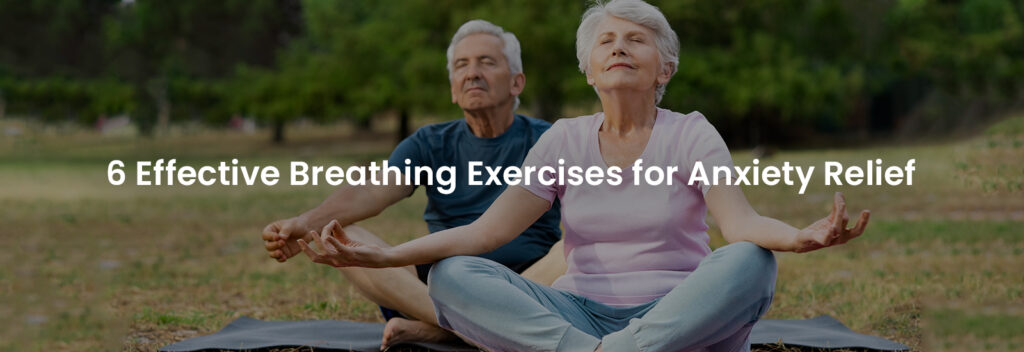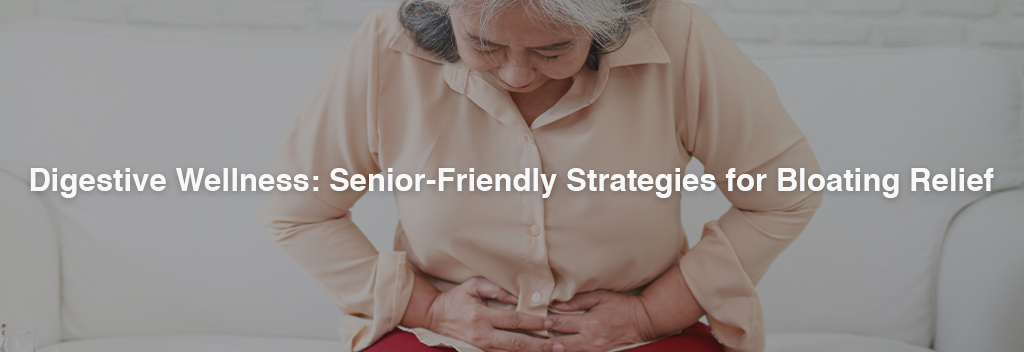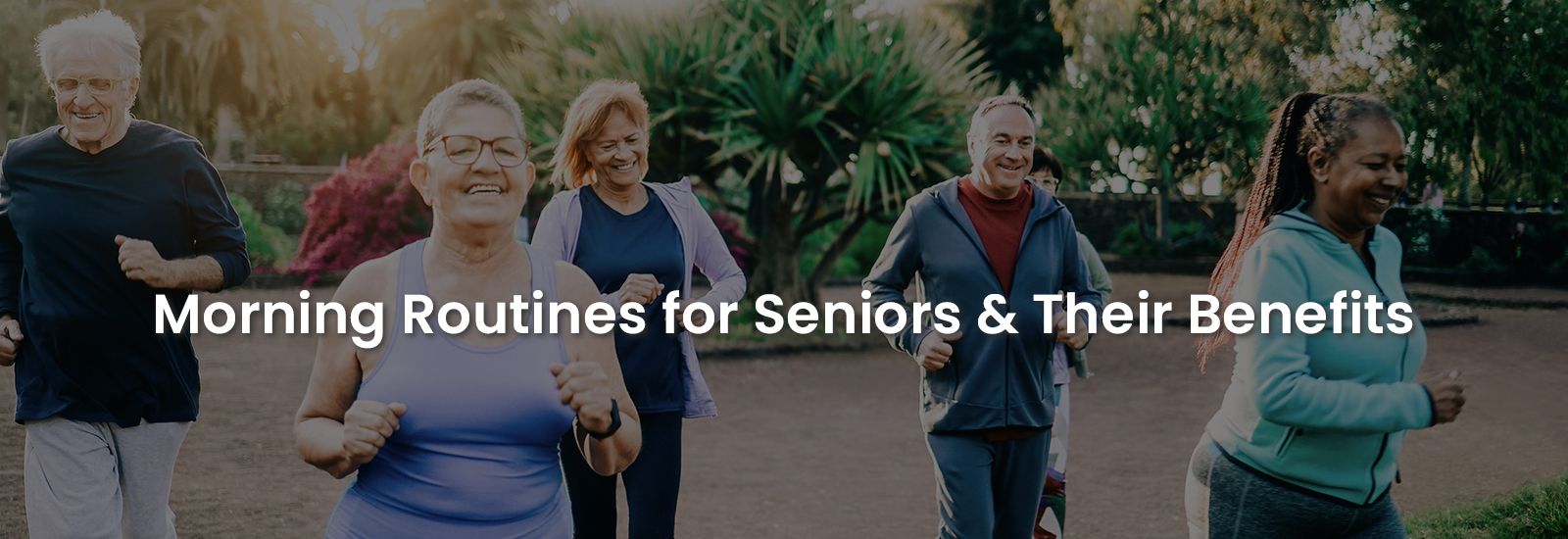
Anxiety is the body’s natural response to stress or perceived threats, characterized by a feeling of fear, apprehension, or uneasiness about future events. According to researchers, nearly a quarter of older adults* have reported anxiety or depression in the past few years.
Persistent anxiety not only contributes to the development of other mental health conditions like depression but can also increase the risk of heart disease, high blood pressure, digestive issues, and more. Chronic anxiety can also impair cognitive function, especially in seniors. Therefore, it is crucial to take proactive steps to manage this condition.
One of the most effective tools to relieve anxiety is practicing deep breathing techniques. In this blog post, we will share detailed insights on the best breathing exercises for anxiety and how they can help. Read on to learn more.
Why Breathing Techniques Are Useful for Anxiety
During an anxiety attack, our body’s stress response activates, leading to rapid and shallow breathing. This type of breathing pattern can further contribute to feelings of distress and exacerbate anxiety symptoms. The following are a few ways in which deep breathing can help relieve this condition:
- Deep breathing exercises activate the body’s relaxation response, which is the opposite of the stress response.
- Breathing techniques can also influence the autonomic nervous system that controls involuntary bodily functions, including heart rate, blood pressure, and digestion. Slow, deep breaths stimulate the parasympathetic nervous system, which helps calm the body during an anxiety attack.
- With every deep breath, oxygen-flow to our brain and body increases. Sufficient oxygen levels promote clarity of thought and relaxation.
- Anxiety can manifest in physical symptoms such as rapid heartbeat, shortness of breath, dizziness, and tension. Deep breathing exercises help relax muscles, slow down heart rate, and alleviate muscle tension.
Best Breathing Exercises for Anxiety
1. Alternate Nostril Breathing
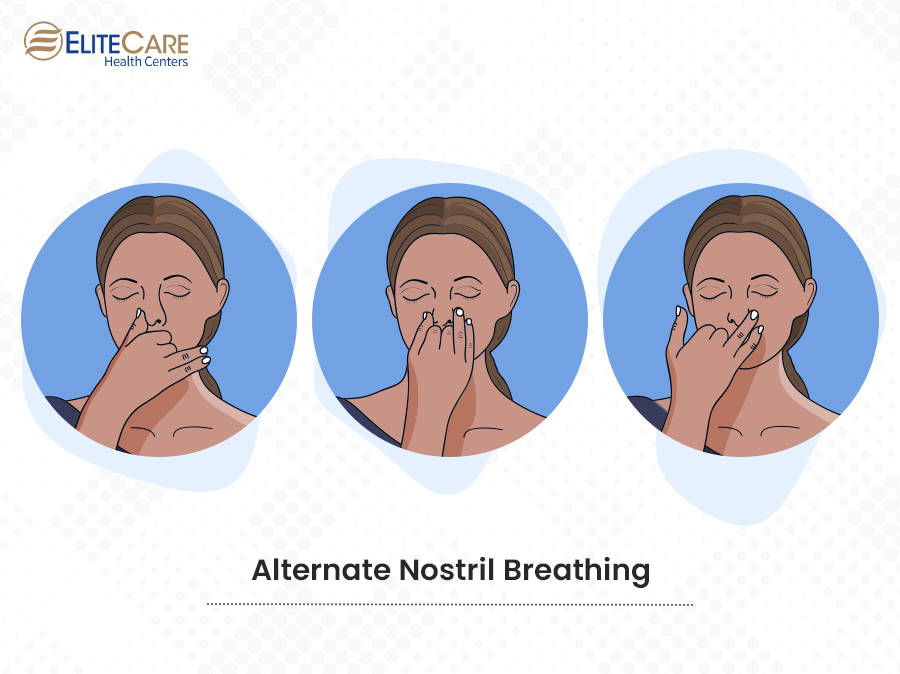
It is a yogic breathing technique that aims to balance the energy flow in the body and promote a sense of calmness. Yoga practitioners believe that this technique helps harmonize the left and right sides of the brain and reduce anxiety by alternating the use of nostrils.
How to do it:
- Sit in a comfortable position and make sure to relax your body.
- By using your right hand, bring your index and middle fingers in between your eyebrows.
- Use your right thumb to gently close your right nostril and inhale slowly through your left nostril.
- Now, close your left nostril with your ring finger, and then release your right nostril, and exhale through it.
- Repeat this cycle for at least 5 minutes, switching between the nostrils with each breath.
2. 4-7-8 Breathing
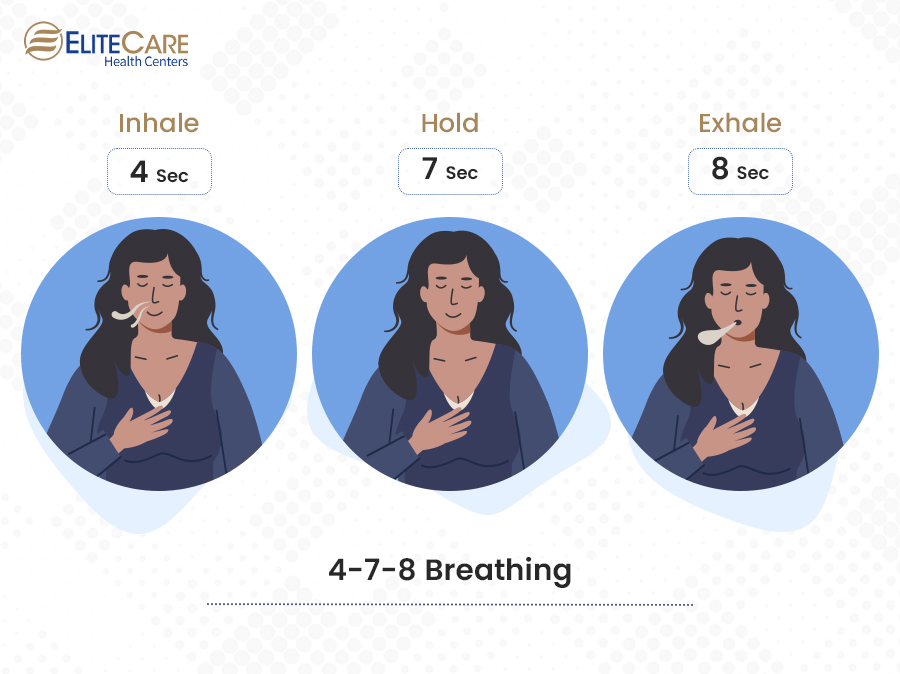
It is a simple and effective exercise that helps regulate the autonomic nervous system, slows down the heart rate, and induces a deep state of relaxation. Initially, individuals should perform this exercise in a seated position with their back straight. Once they are more comfortable and familiar with this technique, they can perform it while lying in bed as well.
How to do it:
- Sit in a comfortable, relaxed position and touch the ridge of tissue behind your upper front teeth with the tip of your tongue.
- Now, close your mouth and inhale slowly only through your nose to a count of four.
- Relax and hold your breath as you count to seven.
- Exhale completely only through your mouth to a count of eight while making a whooshing sound.
3. Box Breathing
Also known as square breathing, this technique involves creating a square pattern with the breath. The box breathing technique enhances calmness and focus by regulating the breath and controlling the nervous system.
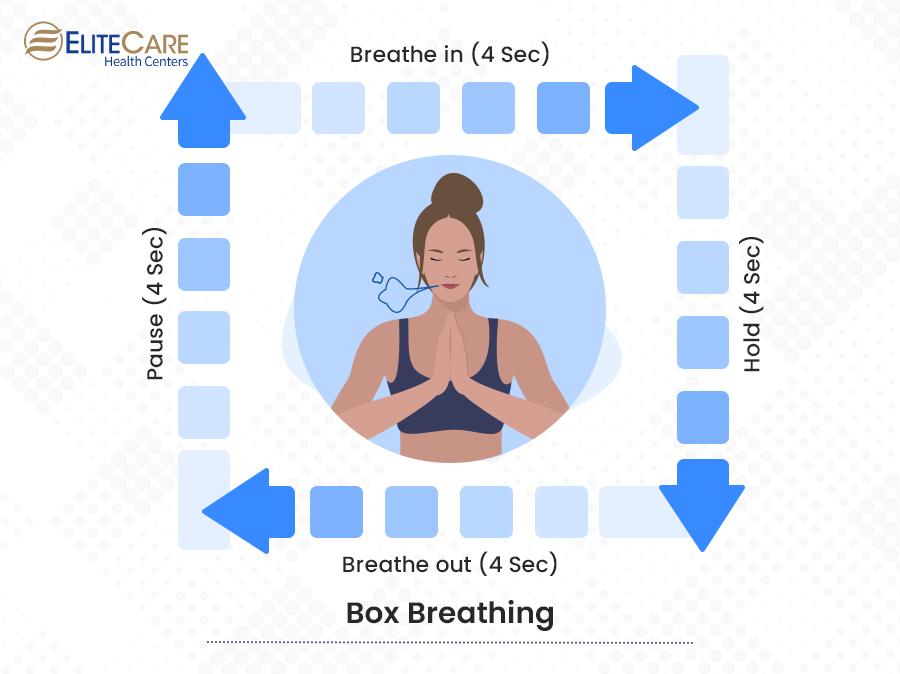
How to do it:
- Sit comfortably and ensure your spine is straight.
- Inhale slowly through your nose to a count of four, imagining drawing the first side of a box.
- Hold your breath for a count of four, visualizing the second side of the box.
- Exhale slowly through your mouth to a count of four, completing the third side.
- Hold your breath again for a count of four, finishing the box.
- Repeat this cycle for at least 5-10 minutes while you focus on the rhythmic pattern of the breath.
4. Pursed-Lip Breathing
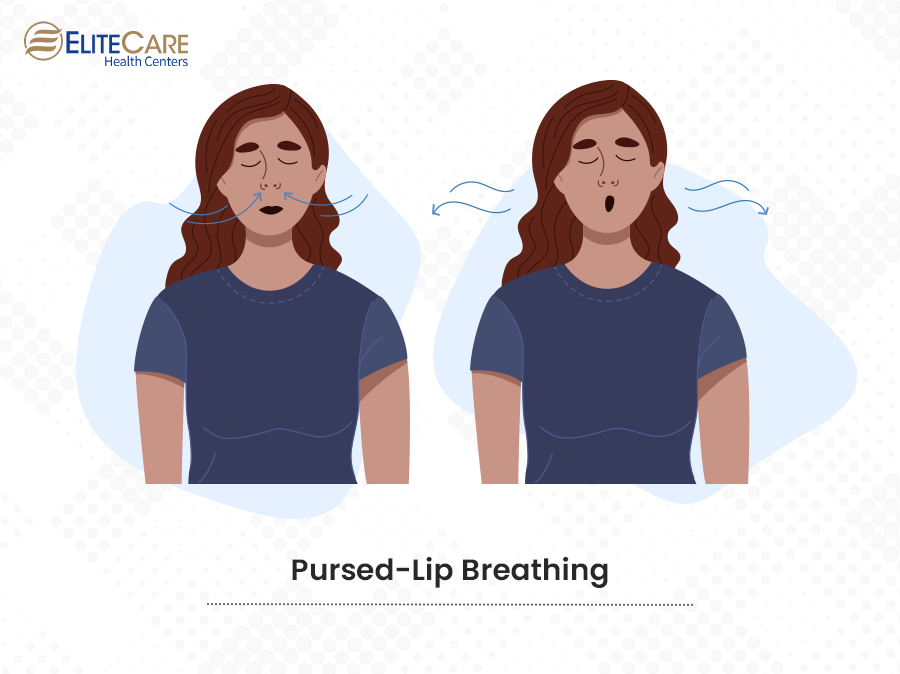
This technique can slow down breathing rates and promote relaxation. Exhalation typically lasts longer than inhalation, allowing for a complete release of air.
How to do it:
- Sit or lie down in a comfortable position and relax your shoulders and neck.
- Inhale slowly through your nose for a count of two.
- Fold your lips as if you are going to blow out a candle and exhale slowly through your pursed lips to a count of four.
- Repeat this cycle for several minutes, allowing each exhale to last longer than the inhale.
5. Diaphragmatic Breathing
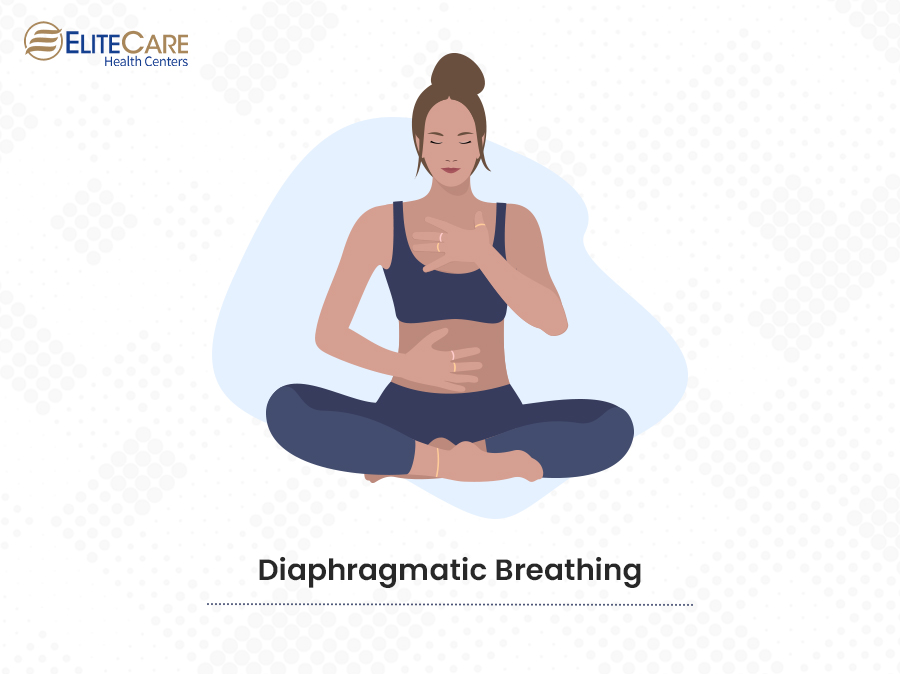
Commonly known as belly breathing, this deep breathing technique focuses on engaging the diaphragm, a dome-shaped muscle located between the chest and abdomen. It helps activate the body’s relaxation response, reduces muscle tension, and increases oxygen flow, promoting a state of calmness and relaxation.
How to do it
- First, lie down or sit in a comfortable position and keep your back straight.
- Now, put one hand on your chest while placing the other hand on your abdomen.
- Inhale slowly through your nose, allowing your abdomen to rise while keeping your chest relatively still.
- Exhale through your mouth, gently contracting your abdominal muscles to help push the air out.
- Continue this deep, slow breathing pattern for several minutes, focusing on the movement of your abdomen.
6. Lion's Breath
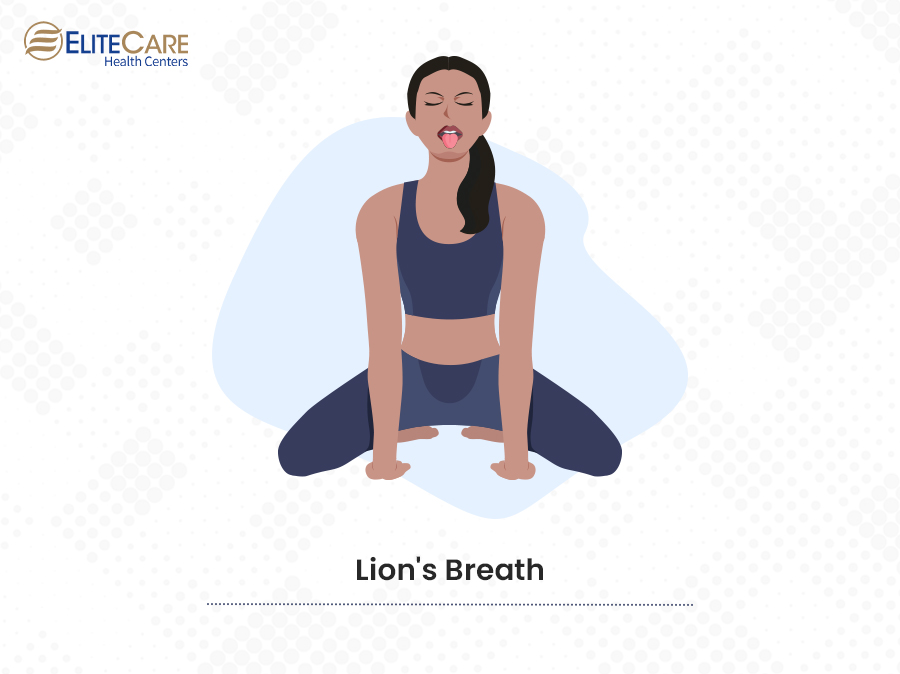
It is a breathing exercise commonly practiced in yoga, often accompanied by a vocalized “ha” sound. Lion’s breath is useful for releasing the tension, stimulating the release of pent-up emotions, and promoting a sense of liberation and relief.
How to do it
- Sit comfortably, with your spine straight and your hands resting on your knees.
- Now, inhale deeply through your nose and fill your lungs.
- Exhale forcefully through your mouth, opening it wide and sticking out your tongue as far as possible.
- Simultaneously, open your eyes wide and stretch your fingers wide apart.
- Repeat this cycle three to five times.
The key to getting the most out of these breathing exercises is to practice them regularly. Individuals should choose a quiet and calm environment to practice these exercises focus and start with a duration that feels comfortable. Consult a primary care physician or an expert for detailed guidance.
When to See a Doctor
While occasional feelings of anxiety are normal, persistent and excessive anxiety may indicate an anxiety disorder. Those who have been experiencing the following symptoms persistently should seek immediate medical attention:
- Constant worry or apprehension that interferes with daily activities or relationships.
- Physical symptoms like frequent headaches, muscle tension, stomachaches, rapid heartbeat, dizziness, or shortness of breath.
- Persistent sleep disturbances, including difficulty falling asleep, staying asleep for prolonged periods, or having restless and unsatisfying sleep patterns regularly.
- Intense and irrational fears or phobias, eventually leading to avoidance behaviors, self-consciousness, embarrassment, etc.
- Recurrent panic attacks with physical symptoms such as chest pain, trembling, sweating, etc.
- Persistent, unwanted, and distressing thoughts or mental images
- Difficulty carrying out daily tasks, fulfilling responsibilities, maintaining relationships, or enjoying activities that were once pleasurable.
Individuals experiencing these symptoms should consult a primary care physician and seek support from a therapist or mental health professional. They can conduct a comprehensive evaluation, provide an accurate diagnosis, and recommend appropriate treatment options to help individuals manage their anxiety effectively.
For any queries or concerns, contact EliteCare Health Centers, one of the best medical clinics and health and wellness centers in Florida that offers a range of senior care services.
* Retrieved from Anxiety or depression among older adults by age U.S. 2020 | Statista. (2021, July 29).


